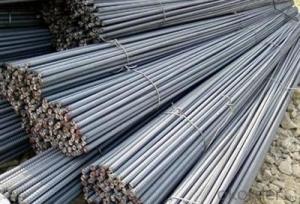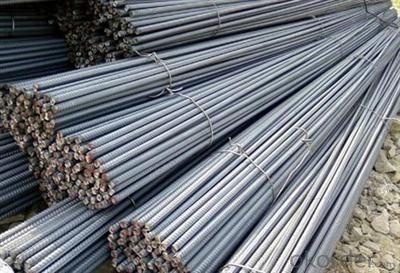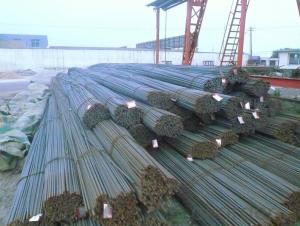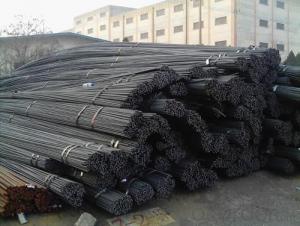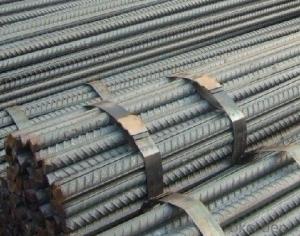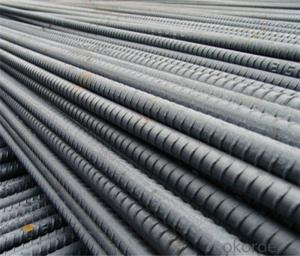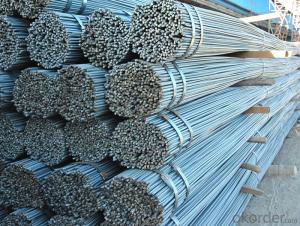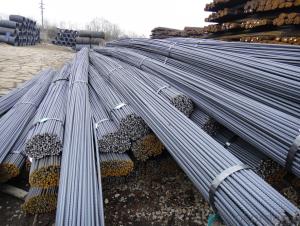Stainless deformed steel bar for construction
- Loading Port:
- Tianjin
- Payment Terms:
- TT OR LC
- Min Order Qty:
- 100000 m.t.
- Supply Capability:
- 10000 m.t./month
OKorder Service Pledge
OKorder Financial Service
You Might Also Like
Specification
OKorder is offering stainless deformed steel bar deformed steel bar at great prices with worldwide shipping. Our supplier is a world-class manufacturer of steel, with our products utilized the world over. OKorder annually supplies products to European, North American and Asian markets. We provide quotations within 24 hours of receiving an inquiry and guarantee competitive prices.
Product Applications:
G460B deformed steel bar deformed steel bar are ideal for structural applications and are widely used in the construction of buildings and bridges, and the manufacturing, petrochemical, and transportation industries.
Product Advantages:
OKorder's deformed steel bar are durable, strong, and resist corrosion.
Main Product Features:
· Premium quality
· Prompt delivery & seaworthy packing (30 days after receiving deposit)
· Corrosion resistance
· Can be recycled and reused
· Mill test certification
· Professional Service
· Competitive pricing
Product Specifications:
Manufacture: Hot rolled
Grade: HRB335
Size: 6mm-25mm
Certificates: ISO, SGS, BV, CIQ
Length: 6m – 12m, as per customer request
Packaging: Export packing, nude packing, bundled
Grade | Technical data of the original chemical composition (%) | |||||||
C | Mn | Si | S | P | B | |||
HRB335 | ≤0.25 | ≤1.60 | ≤0.80 | ≤0.045 | ≤0.045 | >0.0008 | ||
Physics capability | ||||||||
Yield Strength(N/cm2) | Tensile Strength(N/cm2) | Elongation (%) | ||||||
≥335 | ≥490 | ≥16 | ||||||
Usage and Applications of HRB400 Deformed Steel Bar:
Deformed bar is widely used in buildings, bridges, roads and other engineering construction. Big to highways, railways, bridges, culverts, tunnels, public facilities such as flood control, dam, small to housing construction, beam, column, wall and the foundation of the plate, deformed bar is an integral structure material. With the development of world economy and the vigorous development of infrastructure construction, real estate, the demand for deformed bar will be larger and larger..
Packaging & Delivery of HRB400 Deformed Steel Bar:
Packaging Detail: products are packed in bundle and then shipped by container or bulk vessel, deformed bar is usually naked strapping delivery, when storing, please pay attention to moisture proof. The performance of rust will produce adverse effect.
Each bundle weight: 2-3MT, or as required
Payment term: TT or L/C
Delivery Detail: within 45 days after received advanced payment or LC.
Label: to be specified by customer, generally, each bundle has 1-2 labels
Trade terms: FOB, CFR, CIF
FAQ:
Q1: Why buy Materials & Equipment from OKorder.com?
A1: All products offered byOKorder.com are carefully selected from China's most reliable manufacturing enterprises. Through its ISO certifications, OKorder.com adheres to the highest standards and a commitment to supply chain safety and customer satisfaction.
Q2: How do we guarantee the quality of our products?
A2: We have established an advanced quality management system which conducts strict quality tests at every step, from raw materials to the final product. At the same time, we provide extensive follow-up service assurances as required.
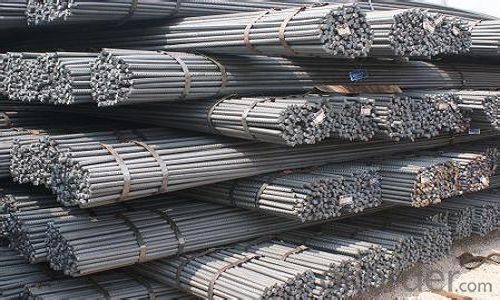
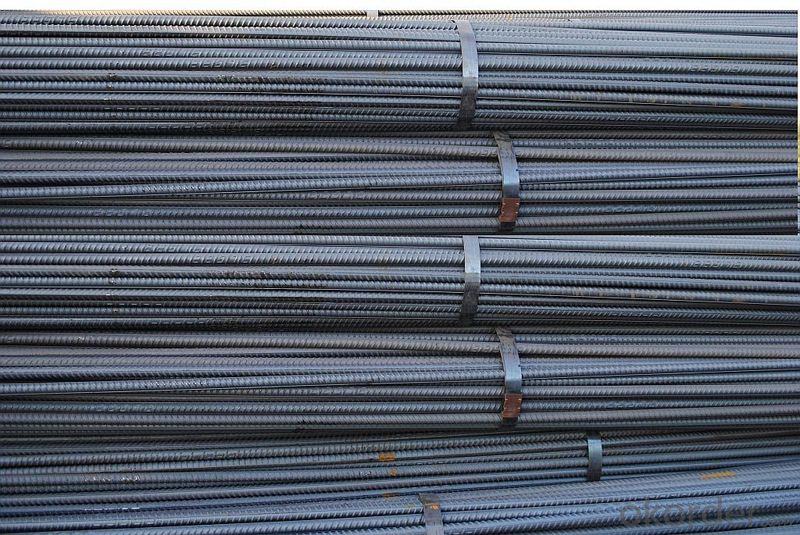
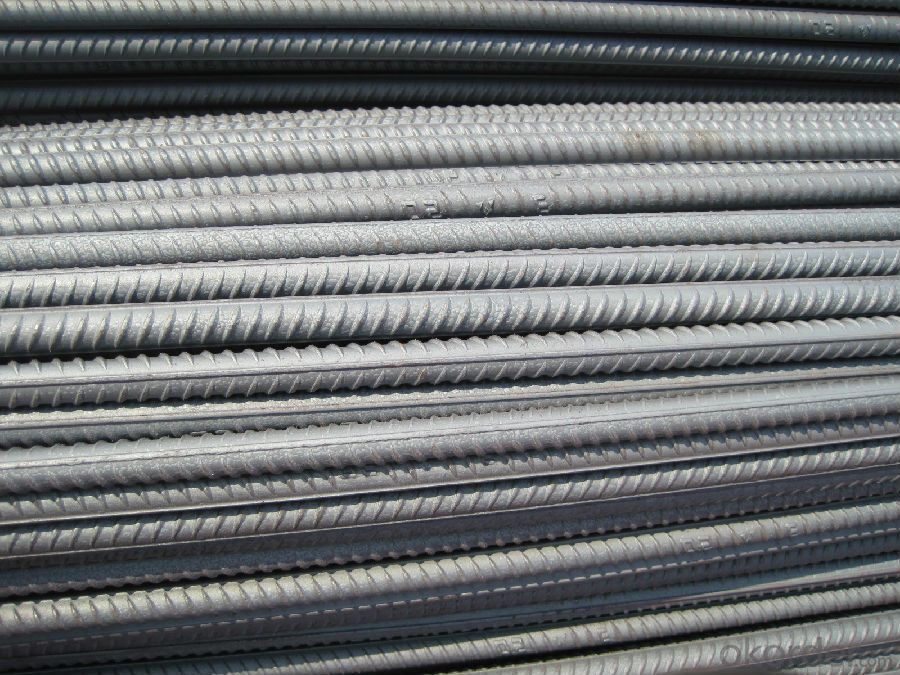
- Q: What are the guidelines for splicing steel rebars in concrete?
- The guidelines for splicing steel rebars in concrete typically include ensuring proper bar alignment, using appropriate splice connectors, maintaining minimum splice length, and following the recommended lap splice lengths based on bar diameter and reinforcement design requirements. Other factors such as bar placement and spacing, concrete cover, and the use of mechanical or welded splices may also be considered depending on the specific project and local building codes.
- Q: Are steel rebars prone to rusting?
- Yes, steel rebars are prone to rusting. Rebars are made of carbon steel, which contains iron as its primary component. When exposed to moisture and oxygen, the iron in steel rebars undergoes a chemical reaction called oxidation, resulting in the formation of iron oxide or rust. This process can be accelerated in environments with high humidity, coastal areas with saltwater exposure, or when the rebars come into contact with water or other corrosive substances. The rusting of steel rebars can weaken their structural integrity and compromise the strength and durability of concrete structures. Therefore, it is essential to protect rebars from rust by applying anti-corrosion coatings or using stainless steel rebars in areas prone to rusting. Regular maintenance and inspection can also help identify and address any rust-related issues in a timely manner.
- Q: What are the guidelines for the proper installation of steel rebars?
- The proper installation of steel rebars is crucial for ensuring the structural integrity and durability of reinforced concrete structures. Here are some guidelines to follow for their proper installation: 1. Planning and Design: Before beginning the installation, it is important to have a detailed plan and design in place. This includes determining the required rebar size, spacing, and configuration based on the structural requirements and specifications. Consulting structural engineers and adhering to local building codes and regulations is essential. 2. Cutting and Bending: Rebars should be cut and bent accurately according to the design specifications. Proper tools such as rebar cutters and benders should be used to ensure clean cuts and precise bends. Any damaged or corroded rebars should be discarded and replaced. 3. Cleaning and Preparation: The surface of the rebars must be free from any contaminants like rust, oil, dirt, or loose scales before installation. Cleaning the rebars using wire brushes or air blasting is recommended to ensure proper adhesion between the rebar and concrete. 4. Placement and Positioning: The rebars should be placed and positioned accurately as per the design drawings. They should be securely tied or supported using tie wires or rebar chairs to maintain the desired spacing and alignment. Splices should be made in accordance with the design requirements and properly lapped to ensure continuity and strength. 5. Concrete Cover: The rebars should be adequately covered with concrete to protect them from corrosion and provide fire resistance. The concrete cover thickness should meet the design specifications and local building codes. Proper spacing between rebars and formwork should be maintained to allow proper concrete flow and consolidation. 6. Anchorage and Embedment: Adequate anchorage and embedment of rebars are essential for transferring loads and ensuring structural stability. Special care should be taken to provide proper hooks, bends, or mechanical anchorage at the ends of rebars as per the design requirements. The rebars should be properly embedded into the adjacent concrete elements to achieve the desired bond strength. 7. Inspection and Quality Control: Regular inspection should be carried out during the installation process to ensure compliance with the design specifications and quality standards. Any deviations or defects should be identified and rectified promptly. It is important to document the installation process and maintain proper records for future reference. By following these guidelines, the proper installation of steel rebars can be achieved, ensuring the structural strength, longevity, and safety of reinforced concrete structures.
- Q: What is the quality difference between round bar and screw steel?
- Different grades of steel (different chemical composition). Round steel (HPB235) is carbon steel, steel is Q235; thread steel is low alloy steel; HRB335 grade steel is 20MnSi (20 manganese silicon); HRB400 grade steel bars are 20MnSiV or 20MnSiNb or 20MnTi etc.;
- Q: How do steel rebars affect the overall noise insulation of a structure?
- Steel rebars, being highly conductive materials, have a minimal impact on the overall noise insulation of a structure. They do not provide significant soundproofing properties and may even contribute to the transmission of sound waves through vibrations. To achieve effective noise insulation, additional soundproofing materials such as insulation boards or acoustic panels should be used alongside steel rebars.
- Q: What are the different types of steel rebars used in dam construction?
- There are several types of steel rebars used in dam construction, including carbon steel rebars, epoxy-coated rebars, galvanized rebars, stainless steel rebars, and corrosion-resistant rebars. These different types of rebars have varying properties and characteristics, allowing engineers to choose the most suitable option based on the specific requirements of the dam construction project.
- Q: Are there any restrictions on the use of steel rebars in certain climates?
- Yes, there can be restrictions on the use of steel rebars in certain climates. In regions with high humidity or coastal areas prone to saltwater exposure, steel rebars are more susceptible to corrosion and rust. In such climates, additional protective measures like epoxy coating or using stainless steel rebars may be required to ensure the longevity and structural integrity of the reinforced concrete.
- Q: What are the factors to consider while selecting steel rebars for a construction project?
- Some factors to consider while selecting steel rebars for a construction project include the grade of steel, corrosion resistance, strength requirements, size and shape of rebars, availability and cost, compliance with building codes and regulations, and the specific needs of the project such as seismic resistance or durability.
- Q: How are steel rebars protected against corrosion in aggressive environments?
- Various methods are utilized to protect steel rebars from corrosion in aggressive environments. One commonly employed approach involves the application of protective coatings. These coatings are administered to the surface of the rebars, establishing a barrier between the steel and the corrosive elements present in the surroundings. Examples of protective coatings comprise epoxy, zinc, and polyethylene coatings. Furthermore, cathodic protection is another means of safeguarding steel rebars. This technique involves linking the rebar to a sacrificial anode, often composed of a more reactive metal like zinc or magnesium. By doing so, the anode corrodes instead of the rebar, effectively sacrificing itself to shield the steel against corrosion. Additionally, corrosion inhibitors can be utilized to protect steel rebars. These inhibitors can be incorporated into the concrete mixture or directly applied to the rebars. Their function is to diminish the corrosive potential of the environment or form a protective film on the surface of the rebar, curtailing corrosion. Moreover, proper design and construction practices can play a pivotal role in preserving the integrity of steel rebars against corrosion. Sufficient concrete cover can aid in establishing a physical barrier between the rebar and the aggressive environment, thereby minimizing the steel's exposure to corrosive elements. Additionally, effective drainage systems and the use of non-corrosive aggregates contribute to the reduction of rebars' exposure to moisture and other corrosive substances. In summary, a combination of protective coatings, cathodic protection, corrosion inhibitors, and appropriate design and construction practices are employed to guarantee the protection of steel rebars in aggressive environments. These measures effectively prolong the lifespan of structures and uphold their structural integrity.
- Q: Are there any alternative materials to steel rebars?
- Yes, there are several alternative materials to steel rebars. Some commonly used alternatives include fiberglass, carbon fiber, and basalt rebars. These materials offer advantages such as corrosion resistance, high tensile strength, and thermal stability, making them suitable for various construction applications. However, their cost and availability may vary compared to traditional steel rebars.
Send your message to us
Stainless deformed steel bar for construction
- Loading Port:
- Tianjin
- Payment Terms:
- TT OR LC
- Min Order Qty:
- 100000 m.t.
- Supply Capability:
- 10000 m.t./month
OKorder Service Pledge
OKorder Financial Service
Similar products
Hot products
Hot Searches
Related keywords
